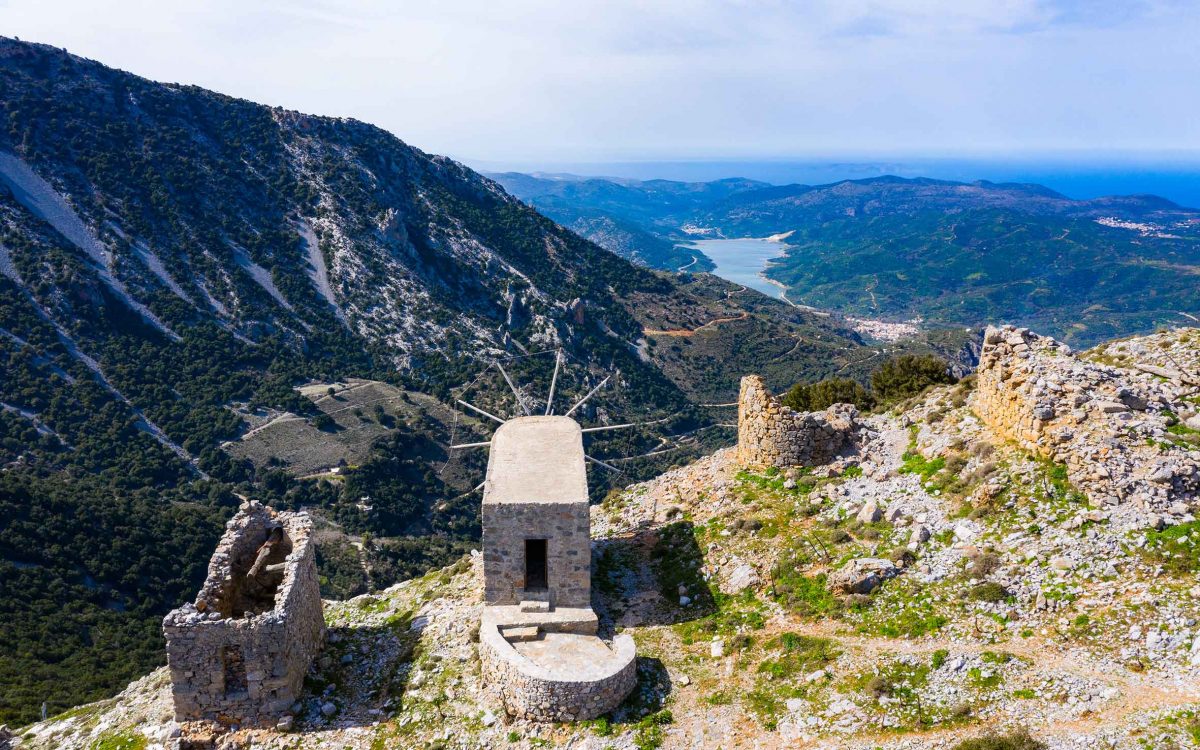The region of Lasithi is home to Elounda, where you’ll find the island’s top luxury resorts. It is also a place of rich natural diversity with beautiful towns and villages, impressive beaches and fascinating historical sites.
These are our top ten not-to-miss places when visiting the region. From beaches to historical sites, our list has it all!
1. Lasithi plateau
The Lasithi Plateau (Oropedio, in Greek), accessible from Malia and from Aghios Nikolaos, is the largest plateau in Crete and is located west of Lasithi at an elevation of 800 to 850 meters. The route from Aghios Nikolaos is full of twists and turns and, as you drive higher, you can even feel the temperature drop. Bordered by the imposing Dikti Mountains, the plateau encompasses more than a dozen villages (Tzermiado, Avrakontes, Aghios Georgios, Psyhro, Lagou are some of the better known among them) built in a circle around a large, fertile plain full of dilapidated windmills once used to irrigate the fields. Most of these villages offer the same sights: two-story dwellings with wooden doors and faded window frames, shops selling traditional handwoven textiles, and traditional cafes where the older men chat away, sipping tsikoudia.
Oropedio’s residents make their living through livestock farming and agricultural production; it’s quite possible, as you walk around one of the villages, that you’ll come across a family or two seated on plastic chairs by the roadside trimming string beans for the local market. These mountain people are genuinely welcoming and will freely give you anything they have, not because it’s the policy of some all-inclusive hotel, but because it’s simply in their DNA.
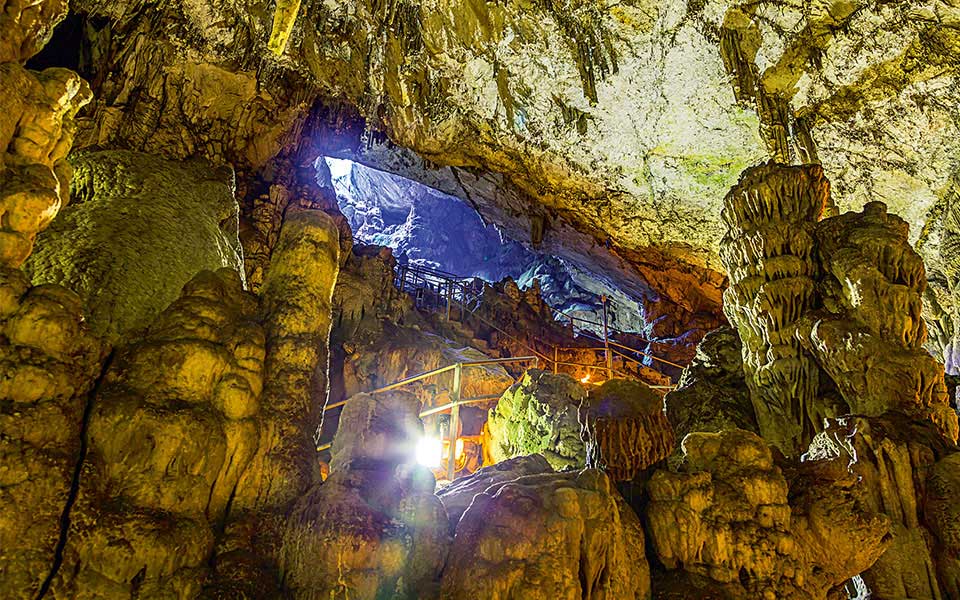
© Perikles Merakos
2. Dikteon Antron Cave
The most popular sight to see in the Oropedio is the Dikteon Antron (or Dikteon Cave). A slightly demanding walk of around 15 to 20 minutes along a busy trail heading away from a parking facility close to the village Psychro will lead you there. According to one version of the myth, Rhea, daughter of the Earth Goddess Gaia, retreated to this cave to give birth to Zeus, protecting him from being eaten by his father Cronus. According to legend, Zeus was nursed in the cave by Amaltheia, a divine she-goat, with the help of the Kouretes (mythical male protectors).
Discoveries from various periods – Neolithic, Minoan, Geometric, Archaic, Classical, Hellenistic and Roman – have been made within the cave itself, a part of which is open to the public. No official guided tours are offered, but a brochure containing detailed information on the site’s history is distributed to visitors when purchasing the ticket, and the impressive stalactites and stalagmites are well worth the walk.
Admission: €6, Open 08.00-19.00 – last entry for visitors at 18.45

© Shutterstock
3. Lake Voulismeni
One of the main attractions of Aghios, as the locals affectionately call the charming little town of Aghios Nikolaos, is little Voulismeni Lake, which is connected to the sea by a narrow channel. Voulismeni is not just a wonderful natural attraction, it’s a place where you can feel the pulse of the town: quiet in winter, full of life in summer, thanks to the tourists who bring so much life to the area. In fact, at the start of each summer before the pandemic, the lake would become the venue for an international cliff-diving competition and show (agiosnikolaoscliffdiving.gr), where athletes from all over the world had the chance to demonstrate their skills leaping from a height of 20 meters.
Three establishments offering wonderful views of Lake Voulismeni are: cafe-piano restaurant Migomis for coffee, ice cream or dinner (20 N. Plastira), Zygos Urban Garden for 3rd wave coffee and food (1 Ethnikis Antistaseos), and cafe-bar Peripou (No.25, 28 Oktovriou).
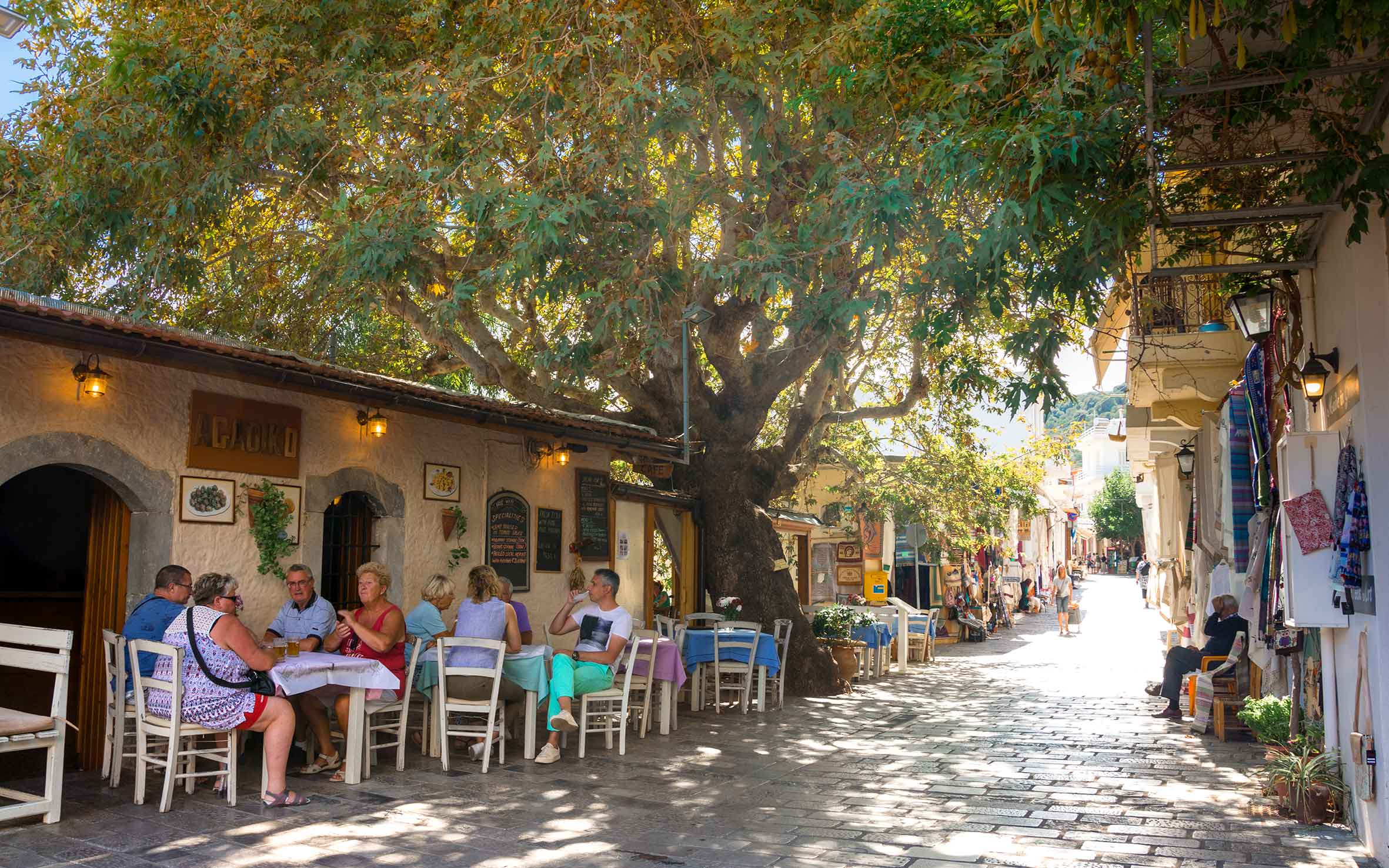
© Shutterstock
4. Kritsa
Just 10 km southeast of Aghios Nikolaos in the foothills of the Dikti Mountains, the village of Kritsa is home to a large agricultural collective of families with olive groves in the area, who produce some of Crete’s finest olive oil under the “Kritsa” brand. The Kritsa producers have an almost religious devotion to their product, 70% of which is exported. A pleasant place for a stop on a stroll through the village is the Kafenio Saridakis, a café under the old plane tree.
Just a stone’s throw from the village stands the Byzantine church of Panaghia Kera that is worth a visit (Open Monday, Wednesday-Sunday, 08:30-15:30). The first thing you’ll notice at this place of worship, erected in the 13th or 14th century, is its rather austere façade, formed of three triangles; however, it is the murals in its interior that are of greatest importance. They were created during different periods and depict the Feast of Herod, the Massacre of the Innocents, the Last Supper, the Weighing of Souls and other religious scenes.
Before leaving the area, you could also pay a visit to Katharo plateau, easily reached from the village, an area composed of pastureland with huge Kermes oak trees and a few small tavernas. Way off the tourist itinerary and cool in the summer, it’s an ideal place for hiking or cycling.
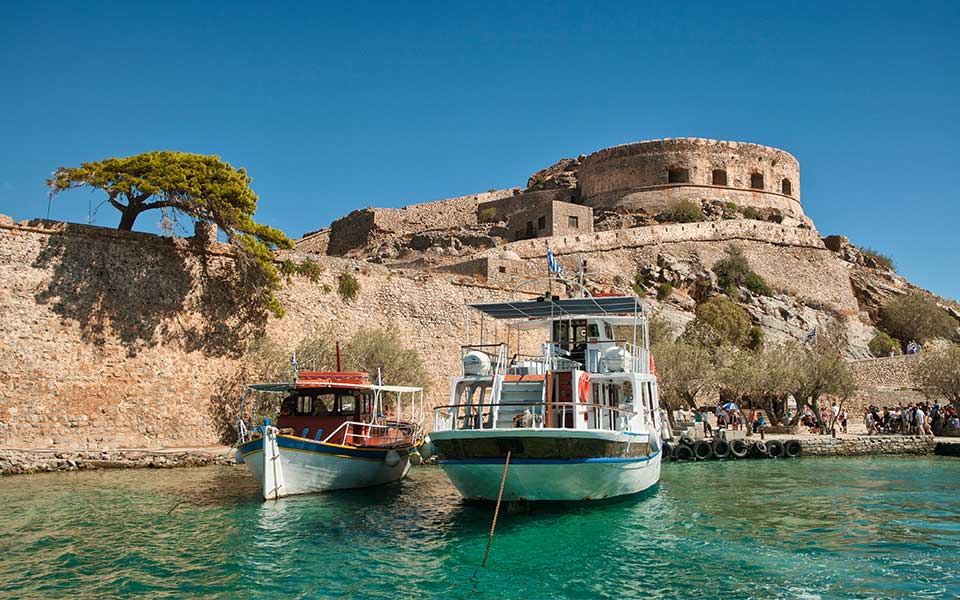
© GNTO Kalaitzian
5. Spinalonga Island
Spinalonga Island, across the village of Plaka, is the second-most visited site on Crete, after Knossos, and one of Crete’s most deeply moving historical monuments.
In antiquity, Spinalonga helped protect Olous (now Elounda) in northwestern Mirabello Bay, from the open sea. (Olous, a sunken Dorian town at the bay’s southern end, prospered in the 4th/3rd centuries BC as a strategic maritime center.) Spinalonga’s massive existing castle, skillfully adapted to the landscape, was constructed by the Venetians (16th century). Later a haven for Christian refugees and Chainides (“fugitive rebels”), the island succumbed to Ottoman rule in 1715, afterwards becoming a thriving port, then an isolated leper colony (1903-1957).
Almost five decades after this last chapter in its history, it would provide the inspiration for British author Victoria Hislop’s award-winning international bestselling novel “The Island,” which has been translated into more than twenty languages.
Entry fee to the archaeological site: €8, Open 08.30-18.00. Boat fare: €10 from Plaka, €12 from Elounda. Boat service: Tel. (+30) 697.668.3597.
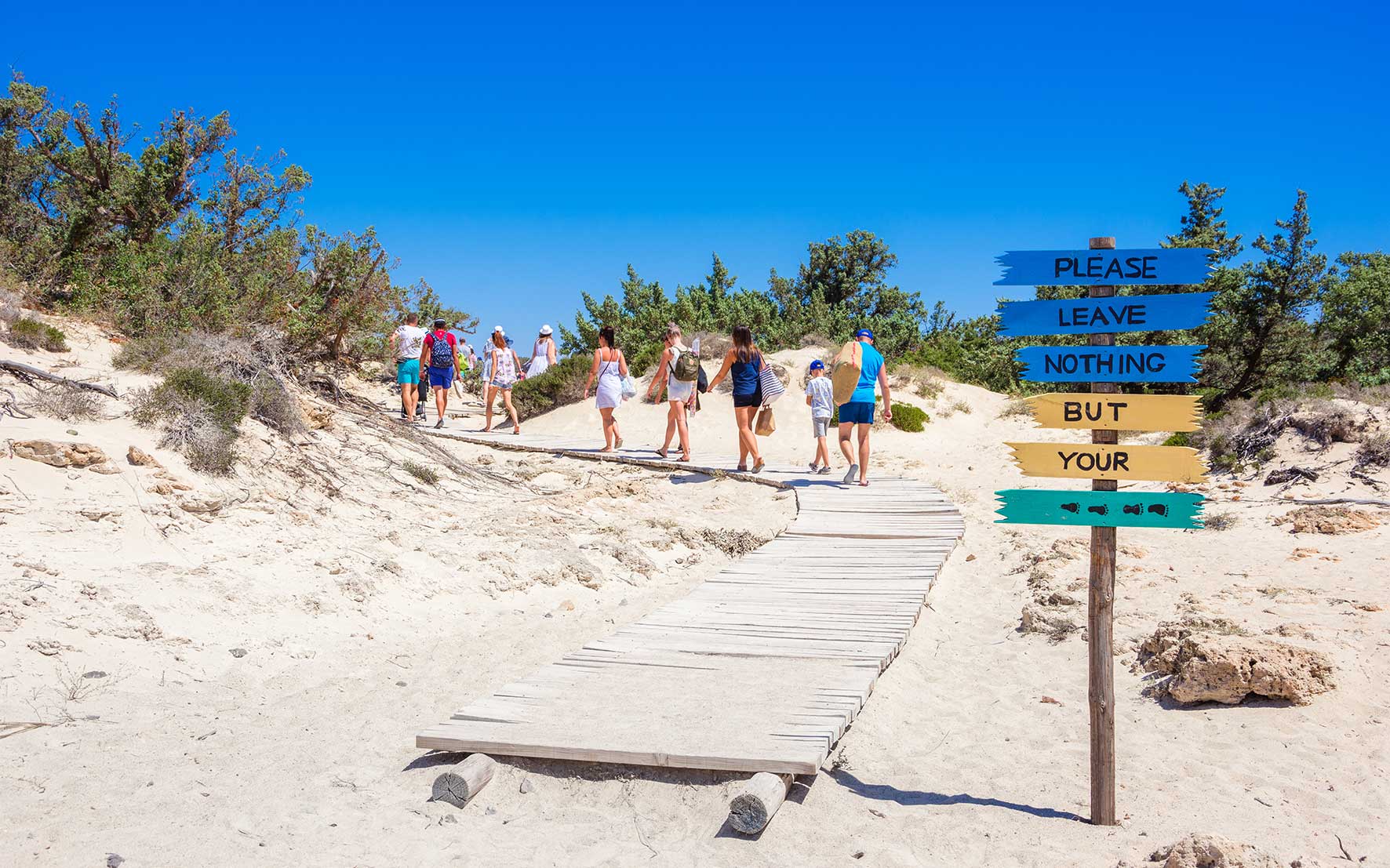
© Shutterstock
6. Chrysi Island
For an exotic swimming destination, take the little boat that crosses over from Ierapetra to popular Chrysi (which means gold), more known to Greeks as Gaidouronisi (which means donkey island). It is an enchanting island in the Libyan Sea with golden sand, dunes, cedars and alluring turquoise waters. Formerly an informal camping destination, it now has beach umbrellas, sun loungers and food stands.
The island’s best-known beach is Belegrina (or Golden Beach), to the north, to which you can walk, crossing sand dunes dotted with prickly cedar trees, from Vouyiou Mati, Chrysi’s port in the south, where the ship anchors. The shoreline is strewn with millions of tiny seashells, and the beach boasts a refreshment stand as well as beach umbrellas. There are, however, many other beaches to be explored, including Kataprosopo and Vagges to the east.
Unspoiled Chrysi is included in the Natura 2000 network of protected areas, but its popularity is ever growing. So, please, handle it with care!
Book tickets or a day trip, including meals, with Cretan Daily Cruises (Tel. (+30) 28420.200.08, cretandailycruises.com)
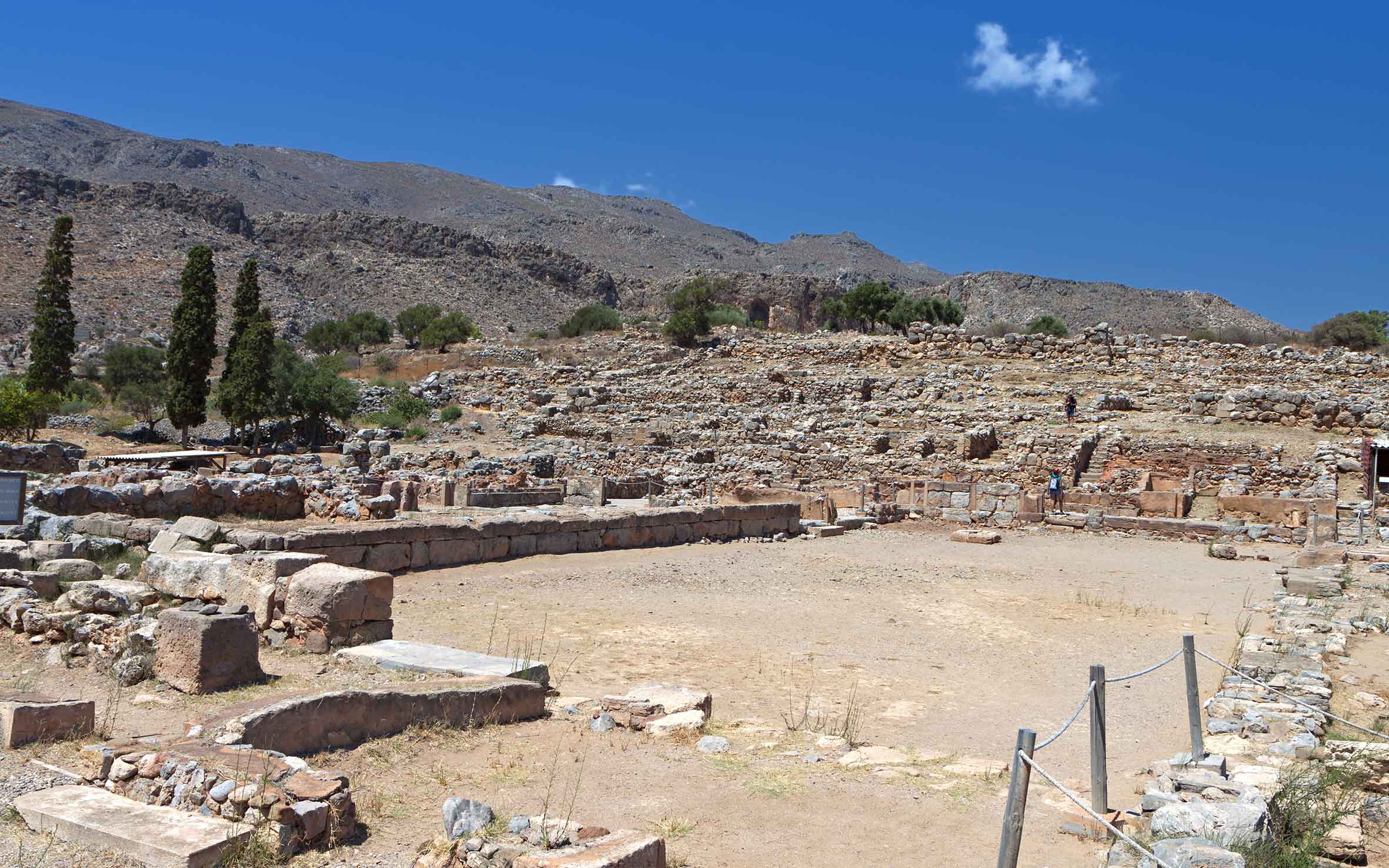
© Shutterstock
7. Kato Zakros
The seaside hamlet of Kato (Lower) Zakros is way off the beaten track, but well worth the journey that takes you through the inspiring, eternal landscape of easternmost Crete. It is a lovely place to unwind, but its long history is its major selling point.
Ancient Zakros was an important Minoan port, trading with Anatolia, Cyprus, and even Syria; its remains cover an 8000 sq.m. site. One of the four great Minoan palaces of Crete, along with Knossos, Malia and Phaistos, it was built around 1600 BC. (Admission to the hillside site is €6, Open daily 08:00-18:00).
As you head down to the coast from the village of (upper) Zakros with its small central square, sleepy tavernas and cool mountain spring, you’ll glimpse the upper section of the Gorge of the Dead, where Minoans from Kato Zakros entombed their dead, believing their departed would rise again in this vast and fertile gorge. Burial caves can still be seen here along the 2-hour walk through the 2.5 km gorge.
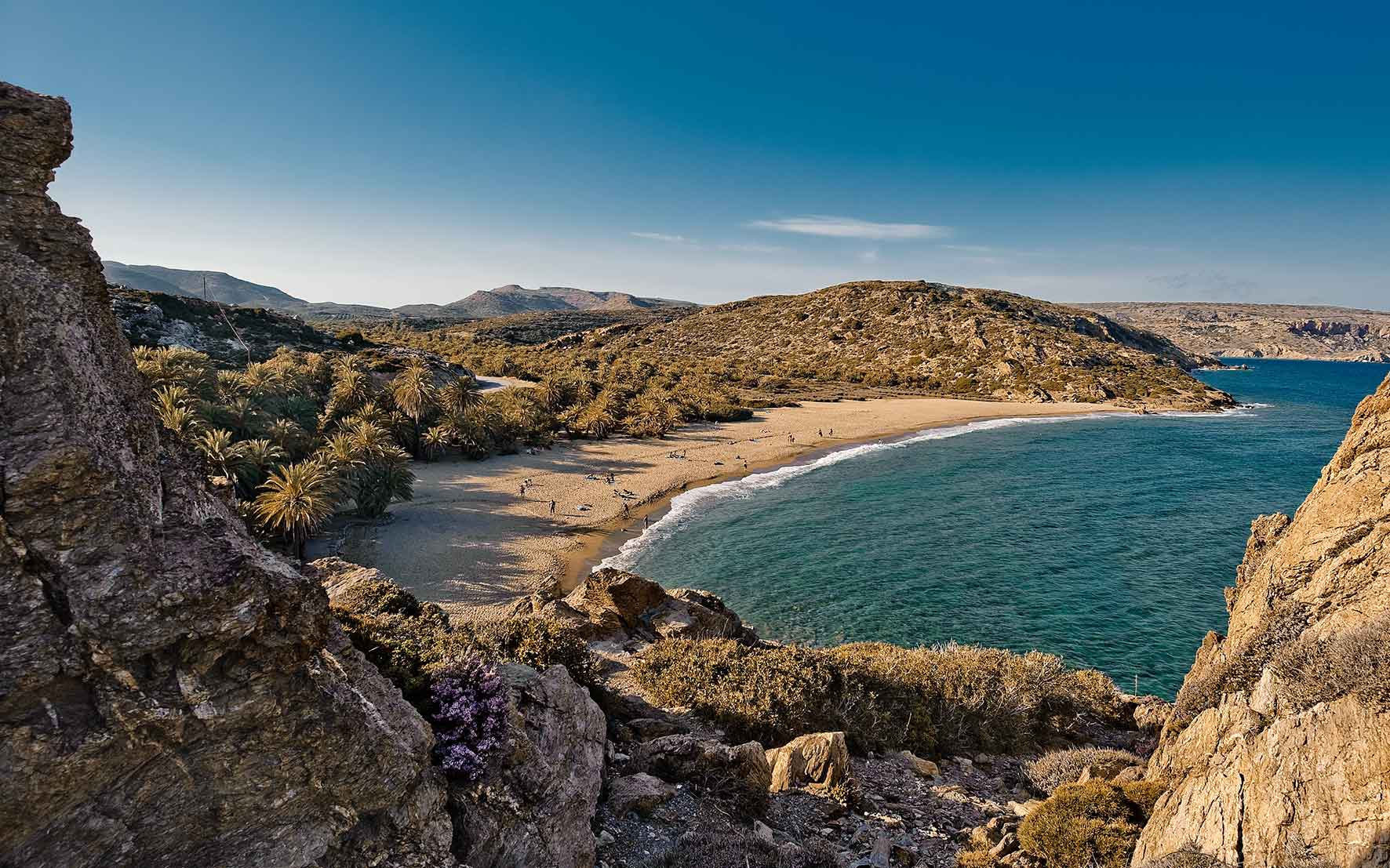
© Shutterstock
8. Vai Palm Forest
Lasithi meets Thailand at Vai (Greek for “palm frond”), 24 km northeast of Sitia. This is the location of a 2000-year-old forest of palm trees, the largest in Europe with around 5000 trees (designated a protected area), providing an exotic backdrop to one of Crete’s most beautiful bays. Legend has it that the forest sprouted from date pits that washed inland after being discarded by Saracen pirates. The trees are of the species Phoenix theophrasti, commonly known as the Cretan date palms. This is a rare species endemic to the Aegean, which flourishes in wet, sandy soil, reaches a height of 15 m and can possess more than one trunk.
Up until the 1980s, Vai and the beach by the same name spreading out in front of the palm forest served as a haven for the counterculture; since then, the area has changed considerably. Today, Vai stands as one of the most touristy spots in eastern Crete; in high season, the beach with its iridescent turquoise water and waves gently lapping on the soft golden sand is packed with tour groups. Independent travelers will find it quieter in spring and late summer.
On the beach, you’ll find the Vai Restaurant (open 12.00-19.00, vai-restaurant.gr), which has been certified by the Agronutritional Cooperation of the Region of Crete and awarded their Cretan Cuisine quality label; the restaurant serves fish and other seafood, local raki and organic wines from Toplou Monastery, which lies an 11-minute drive from here.
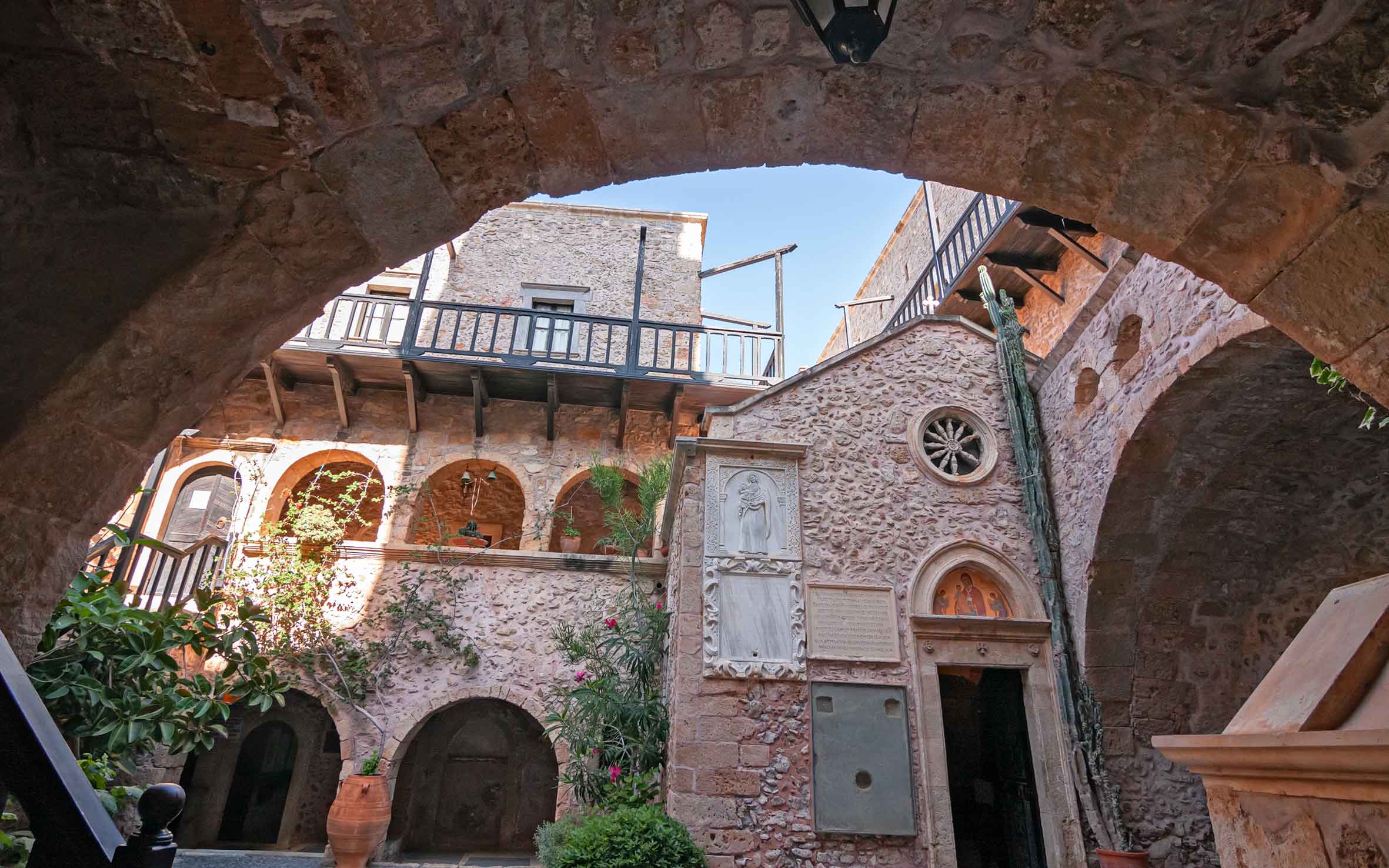
© Shutterstock
9. Toplou Monastery
Moni Toplou (i.e. Toplou Monastery) is one of the richest and most historically important monasteries in Greece. From the 15th century onwards, this fortress-like holy refuge was a bastion of Cretan resistance, first against marauding pirates, then against the Ottomans, and once more during WWII, against Crete’s German occupiers. The monastery’s museum has a fascinating collection of engravings and icons.
If you are a fan of the famed Cretan raki, aka tsikoudia (a potent spirit with up to 45% alcohol by volume, made 100% from grape pomace), we recommend the one they produce and sell here.
Admission: €4. Open 09:00-19:00.
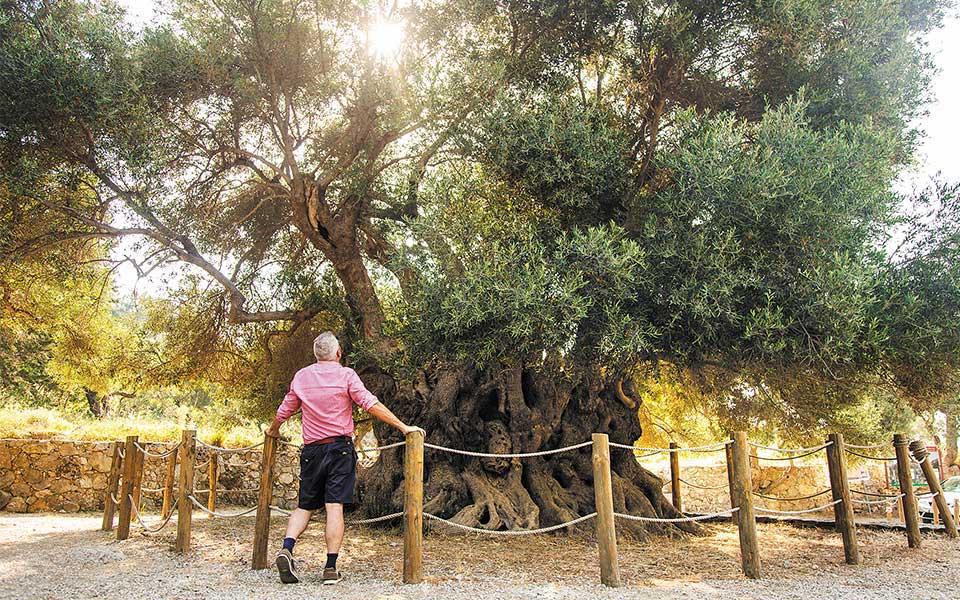
© Stelios Papardelas
10. Monumental Ancient Olive Tree of Azoria
Northeast of Ierapetra in Lasithi, along the road that climbs to the archaeological site of Azoria, you’ll find one of Crete’s most ancient olive trees, the monumental olive tree of Azoria. Believed to have been planted between 1350 and 1100 BC, this now-enormous tree has a trunk circumference of more than 22 meters at its base.
At the 2004 Athens Olympics, Japan’s gold medalist marathoner Naoko Takahashi was presented with a victor’s wreath made from a branch of this ancient tree.

